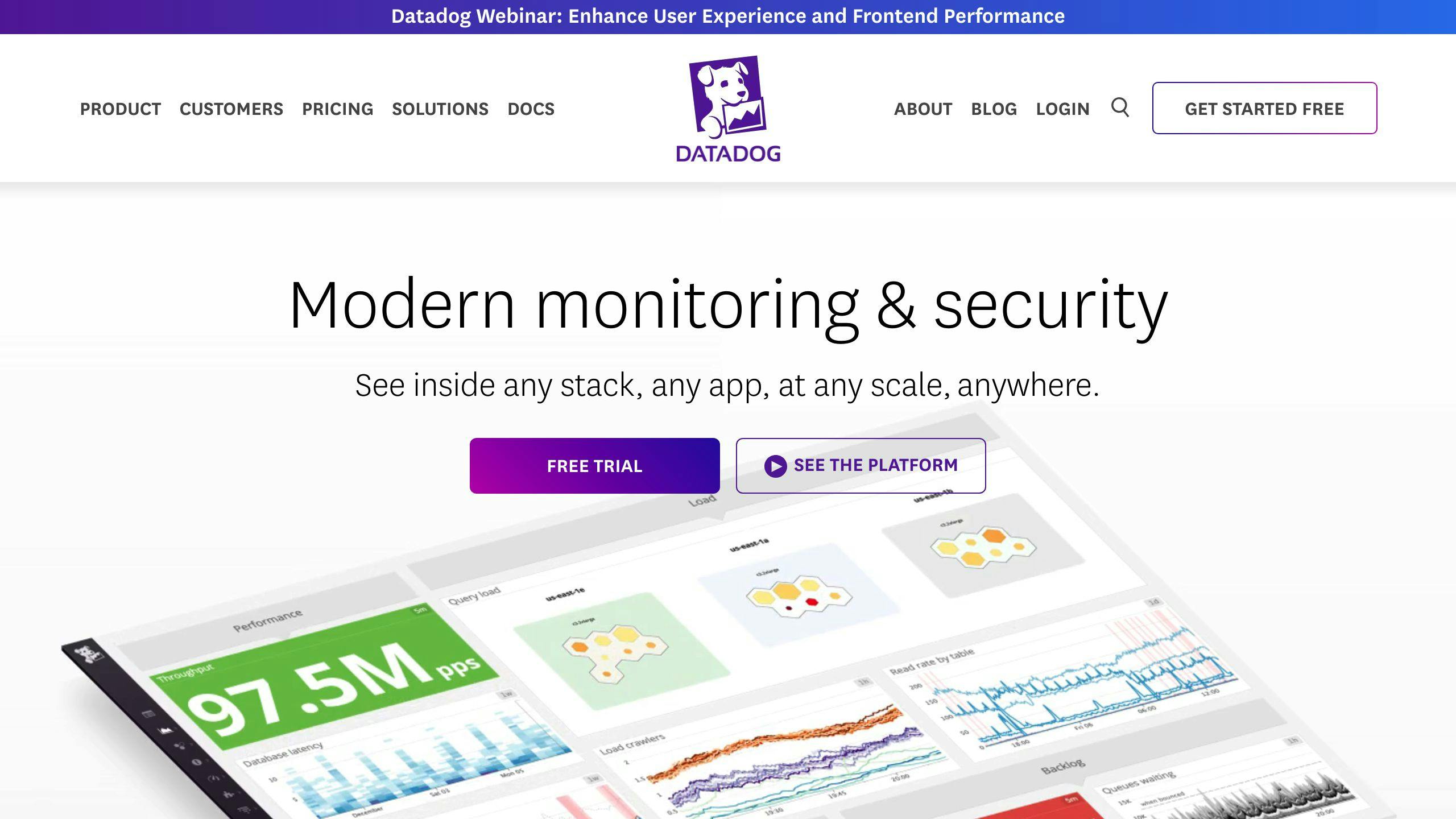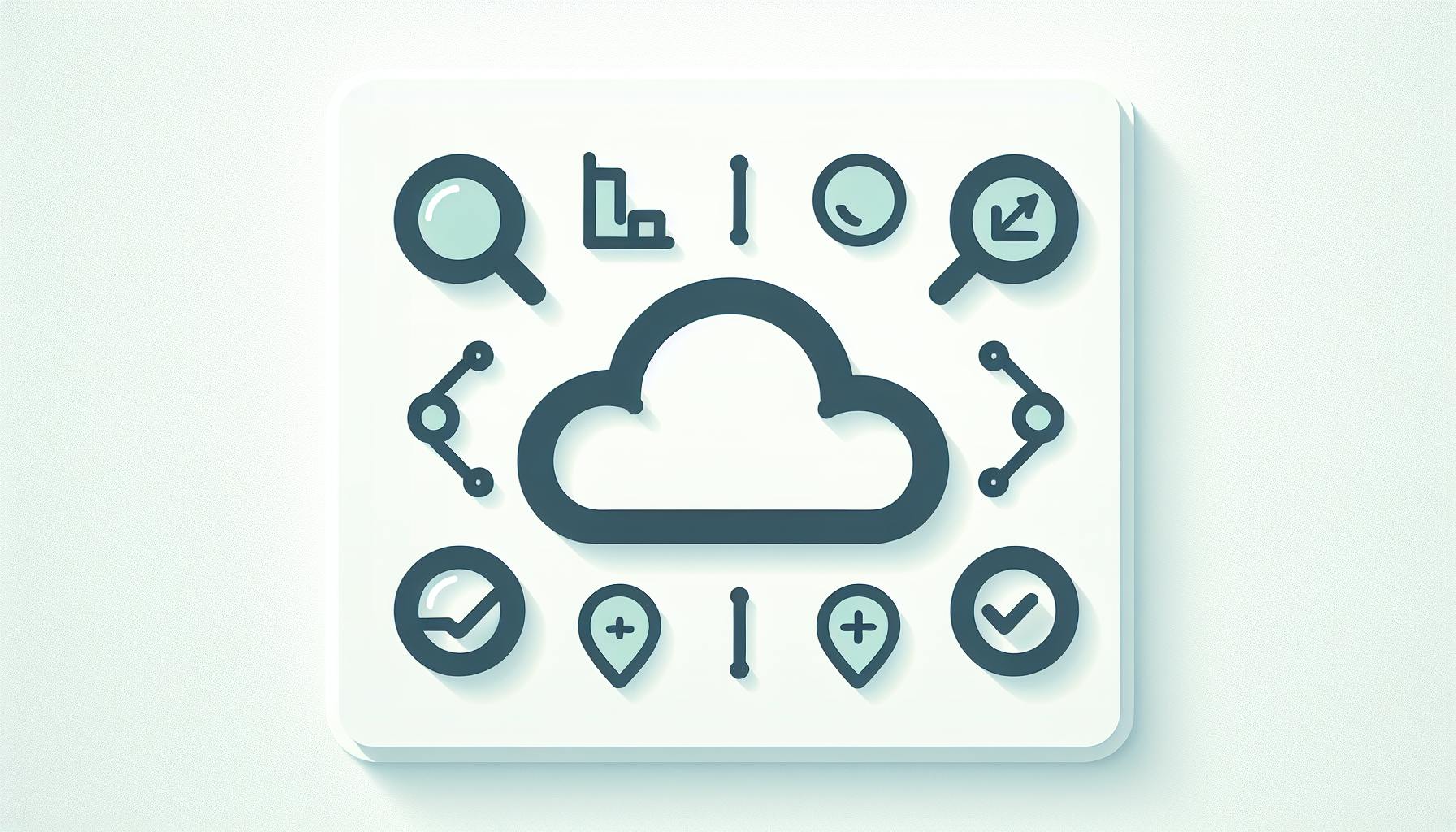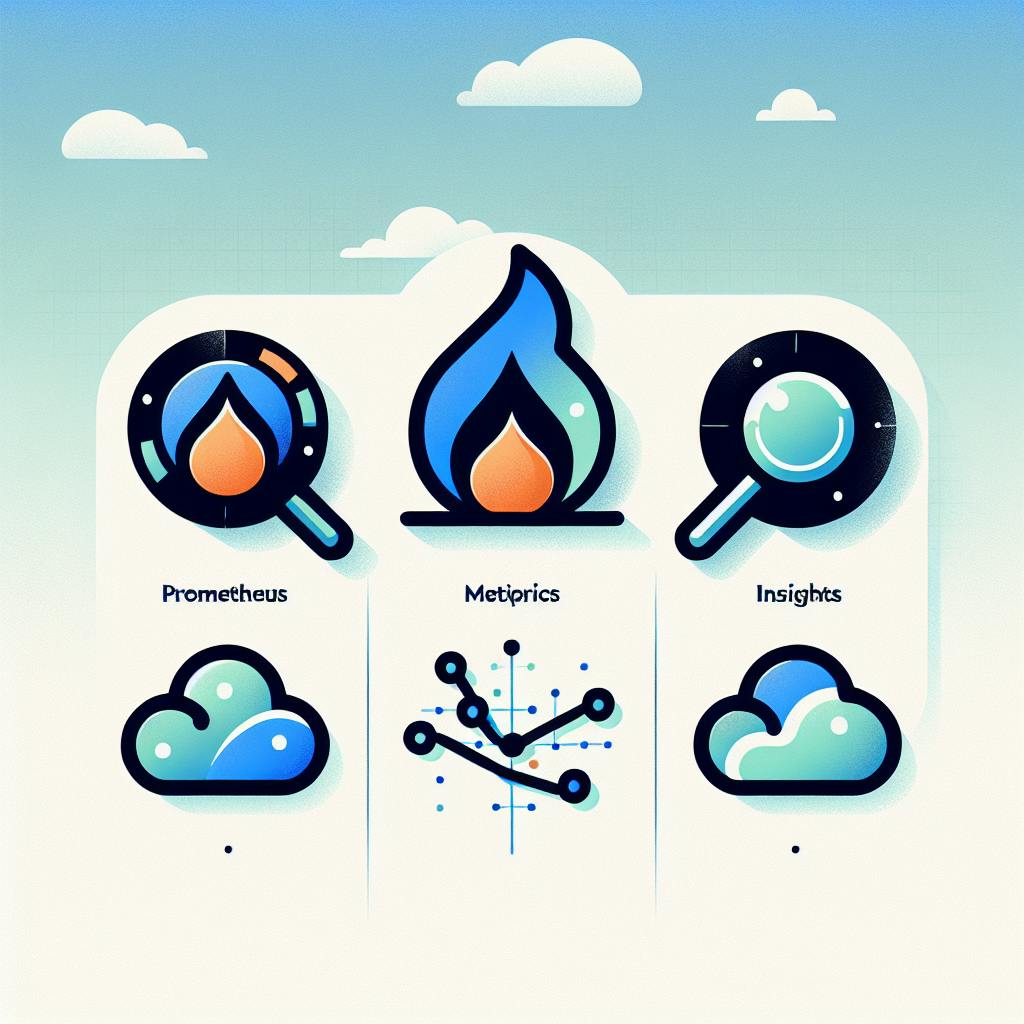Datadog is popular, but it has limits. Here's how to level up your observability:
- Mix open-source and paid tools for better coverage
- Focus on metrics, logs, traces, and events
- Use AI for smarter alerts and faster fixes
- Build observability in from the start
- Make it a team effort, not just IT's job
- Keep updating as your system grows
Quick tool comparison:
| Tool | Key Features | Pricing | Best For |
|---|---|---|---|
| Datadog | Cloud monitoring, APM, logs | $15/mo+ | All-in-one solution |
| SigNoz | Full-stack APM, OpenTelemetry | Free, $199+/mo | Budget-conscious teams |
| New Relic | Full-stack, AI insights | 100GB free, $0.30/GB after | User-friendly option |
| Dynatrace | AI-driven, full-stack | $69/mo for 8GB/host | Large enterprises |
| Grafana | Data viz, alerting | Free, paid plans | Custom dashboards |
The best strategy combines tools, focuses on key data, and evolves with your needs.
Related video from YouTube
1. Datadog's Limits

Datadog's popular, but it's not perfect. Let's look at what it can do and where it falls short.
1.1 What Datadog Can Do
Datadog offers:
- Infrastructure monitoring
- Application performance monitoring (APM)
- Log management
- Cloud security
- Real-time business intel
It lets you watch your whole stack in real-time.
1.2 Common Datadog Problems
Users often face these issues:
- Complex pricing: Each product has its own pricing, leading to surprise costs.
-
Expensive logs: Log costs add up fast:
- Ingestion: $0.10/GB
- 3-day retention: $1.06/GB
- 30-day retention: $2.50/GB
- Scaling issues: Bigger companies face higher costs and complexity.
- Manual setup: Installing agents takes time and effort.
- Tricky UI: The interface has a learning curve.
1.3 Why Use Multiple Tools
Many teams are using multiple tools because:
- Cost control: Mix tools to optimize spending.
- More features: Fill Datadog's gaps with other tools.
- Flexibility: Adapt as your needs change.
- Avoid lock-in: Don't rely too much on one vendor.
"The log analytics process within Datadog is far more complex than it needs to be." - Dave Armlin, VP Customer Success, ChaosSearch
This complexity often pushes teams to find simpler log tools.
2. Key Parts of Observability
Observability is about understanding your system through data. Here are the main parts:
2.1 Detailed Metrics
Metrics are numbers that show system health. They:
- Are quick and cheap to collect
- Show trends over time
- Can trigger alerts
Examples: CPU usage, memory use, error rates, response times.
2.2 Better Log Management
Logs are text records of system events. For good log management:
- Only collect important logs
- Use a tool to make searching easy
- Structure your logs for better analysis
2.3 Tracing in Complex Systems
Traces show how requests move through your system. They help:
- Find bottlenecks
- Show service dependencies
- Fix user complaints faster
2.4 Tracking Important Events
Events are system changes. They:
- Provide context for other data
- Help understand cause and effect
- Can show user actions that led to issues
Quick comparison:
| Type | Purpose | Best For | Tools |
|---|---|---|---|
| Metrics | Health checks | Monitoring, Alerts | Prometheus, InfluxDB |
| Logs | Detailed records | Debugging, Analysis | Splunk, Papertrail |
| Traces | Request flows | Performance tuning | Honeycomb, New Relic |
| Events | State changes | Correlation, Context | Levitate, Datadog |
"Observability emphasizes collecting and correlating diverse data sources to gain a holistic understanding of a system's behavior." - Honeycomb
3. Improving Your Observability Tools
To get more from your setup:
3.1 Mixing Open-Source and Paid Tools
Combine free and paid tools for the best results. Example:
- Prometheus (free) for metrics
- Grafana (free) for dashboards
- Datadog (paid) for advanced analytics
This mix saves money while giving you powerful features.
3.2 Using AI for Better Analysis
AI can:
- Spot unusual patterns fast
- Predict issues before they happen
- Cut down on false alarms
Datadog's App Builder lets you create custom AI tools. You could build an app that:
- Checks CPU and memory use
- Scales services automatically
- Does it all within Datadog
This kind of AI automation saves tons of time.
3.3 Adding Custom Monitoring
Sometimes you need specific checks. Custom monitoring fills those gaps:
| Type | What It Does | Example |
|---|---|---|
| WMI-based | Monitors Windows | Track custom Windows services |
| AMP-based | Uses scripts | Monitor a homegrown app |
| SNMP-based | Checks network devices | Track custom router metrics |
N-able N-central lets you create and share these custom checks.
4. Best Ways to Use Observability
To get the most out of your strategy:
4.1 Setting Clear Goals
Define specific targets. This guides tool choice and process development.
Example goals:
| Goal | Metric | Target |
|---|---|---|
| Cut downtime | Mean Time to Resolution | < 30 minutes |
| Boost performance | Avg response time | < 200 ms |
| Optimize resources | CPU use | < 70% |
Clear goals help you measure success and make data-driven improvements.
4.2 Making Observability a Team Effort
Get everyone involved:
- Form cross-functional teams
- Create shared dashboards
- Hold regular review meetings
"Everything fails, all the time." - Werner Vogels, Amazon CTO
This quote shows why observability is everyone's job, not just IT's.
4.3 Always Improving Observability
Keep refining your approach:
- Audit your setup quarterly
- Use incident insights to improve
- Stay up-to-date with new tools and techniques
As your systems change, your observability should too.
sbb-itb-9890dba
5. Advanced Observability Methods
For complex systems, try these cutting-edge methods:
5.1 Testing System Strength
Chaos Engineering finds weak spots before they cause real problems:
- Set a performance baseline
- Predict how your system might fail
- Run controlled failure tests
- Learn and fix issues
Netflix's "Chaos Monkey" randomly shuts down servers to test resilience.
5.2 Building with Observability in Mind
Don't add observability later. Build it in from the start:
- Use structured logging
- Add context to metrics
- Create clear traces
Dynatrace's real-time topology mapping helps teams understand system connections.
5.3 Predicting and Spotting Issues Early
AIOps tools use AI to predict problems:
| Feature | Benefit |
|---|---|
| Anomaly detection | Spot unusual behavior fast |
| Pattern recognition | Identify recurring issues |
| Predictive analysis | Forecast potential problems |
An AIOps tool might notice CPU spikes every Monday at 9 AM, letting you add resources before slowdowns.
"The ability to manage situations and service impact monitoring using AIOps, reducing event noise using AI/ML functionalities, and integrating their many event and log sources are gamechangers for Ericsson operations." - Vipul Gaur, Technical Product Manager, Ericsson Group IT
6. Solving Common Observability Problems
As you scale up, you'll face new challenges. Here's how to tackle them:
6.1 Handling Large Amounts of Data
To manage data overload:
- Use tools like Cribl Stream to control data flow
- Filter out useless data
- Add relevant context to data
- Automatically remove sensitive info
Cribl Stream can cut logging data by over 50%, saving resources without losing insights.
6.2 Reducing Alert Overload
To fight alert fatigue:
| Strategy | How to Do It |
|---|---|
| Classify alerts | Set up a system for severity and service area |
| Create runbooks | Include system maps, owners, and key steps |
| Adjust on-call schedules | Review incident patterns to spread the workload |
Opsgenie offers practical solutions like suppressing non-critical alerts and grouping similar alerts.
6.3 Keeping Data Safe and Compliant
To balance visibility and security:
- Monitor data flows and access continuously
- Use targeted controls for high-risk areas
- Try AI tools for finding sensitive data
Secuvy uses machine learning to help with GDPR, CCPA, and HIPAA compliance.
For long-term data storage:
- Check industry rules (e.g., 1 year for PCI DSS, 7 years for SOX)
- Use cloud platforms for cost-effective storage
- Make sure data is easy to access for audits
Observe offers 13-month retention by default, meeting many compliance needs without extra cost.
7. What's Next for Observability
The field is changing fast. Here's what's coming:
7.1 AI in IT Operations
AI will transform observability:
- Smarter alerts with fewer false alarms
- Faster problem-solving by spotting patterns
- Some issues fixed automatically
Real-world example:
"A global energy company used AI to cut false alerts by 40%, from 17,000 to 10,000. They also reduced their monitoring tools from 30 to just 5." - AIOps platform case study
7.2 Edge Computing and Observability
As edge computing grows, observability must adapt:
- Real-time monitoring for edge devices
- Handling huge amounts of data from many locations
- Tracking complex networks with edge devices
7.3 Observability for Serverless and Containers
New tech brings new challenges:
| Challenge | Solution |
|---|---|
| Short-lived processes | Use tools that track fleeting events |
| Complex dependencies | Map connections between services |
| Scaling issues | Monitor resource use across many containers |
The future of observability is about AI, edge computing, and new tech like serverless. Stay on top of these trends to manage your IT better.
8. Wrap-up
A strong observability strategy goes beyond one tool. To stay ahead:
- Mix tools: Combine open-source and paid solutions.
- Focus on key areas: Watch metrics, logs, traces, and events.
- Use AI wisely: It's changing how we handle IT issues.
- Watch costs: Look for clear pricing.
- Plan ahead: Keep an eye on trends like edge computing.
- Make it a team effort: Get everyone involved.
- Keep improving: Regularly check your setup.
9. Tool Comparison Chart
| Tool | Key Features | Pricing | Strengths | Weaknesses |
|---|---|---|---|---|
| Datadog | Cloud monitoring, APM, logs | $15/mo+, $0.05/custom metric | Robust, customizable | Complex setup, high custom metric costs |
| SigNoz | Full-stack APM, OpenTelemetry | Free, $199+/mo | Integrated data, open-source | Newer, smaller community |
| New Relic | Full-stack, AI insights | 100GB free, $0.30/GB | User-friendly, good docs | Can be costly at scale |
| Dynatrace | AI-driven detection, full-stack | $69/mo for 8GB/host | Auto-discovery, root cause analysis | Complex for small teams, expensive |
| Grafana | Data viz, alerting | Free, paid plans | Customizable, wide integration | Needs data source setup |
Choose based on your needs, budget, and team skills. For open-source with integrated features, try SigNoz. For advanced AI insights with a bigger budget, consider Dynatrace.
FAQs
How do I choose an observability tool?
Look for:
- Proactive alerts
- Smart anomaly detection
- Cost-effective data management
- Easy-to-use dashboards
- Efficient data correlation
- Automated service instrumentation
- Comprehensive tracing
Consider:
- Integration with your tech stack
- Scalability
- Compliance needs
- Vendor support quality
Evaluate data volume handling and retention. Some offer free tiers, others charge by data or hosts monitored.
What is open source observability?
It's using free, community-driven tools to monitor and analyze your system. Advantages:
- Customizable
- No vendor lock-in
- Community support
- Potential cost savings
But remember:
- Running open-source at scale isn't free
- You might need in-house experts
Popular open source tools:
| Tool | Focus |
|---|---|
| Prometheus | Metrics and alerts |
| Grafana | Data visualization |
| Jaeger | Distributed tracing |
| ELK Stack | Log management |
Weigh flexibility against maintenance costs when considering open source.



